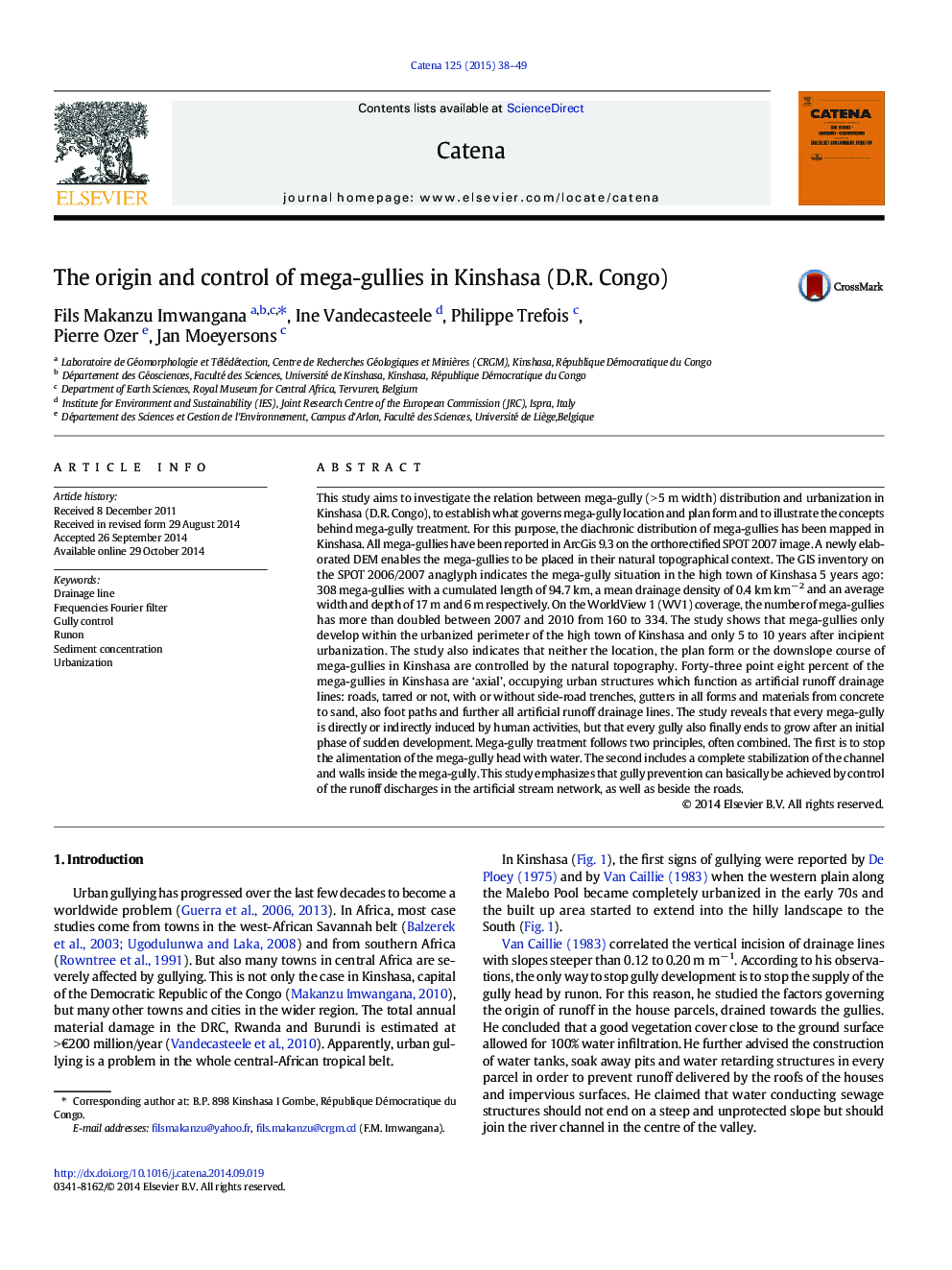| Article ID | Journal | Published Year | Pages | File Type |
|---|---|---|---|---|
| 4571276 | CATENA | 2015 | 12 Pages |
•A GIS inventory of gullies in Kinshasa has been obtained on the basis of RS data.•Field surveys are coupled with Google Earth imagery to verify the gully development.•308 mega-gullies have been mapped: 210 are nearly ‘active’ and 98 ‘stable’.•Field observations show some successes and failures of gully treatment.
This study aims to investigate the relation between mega-gully (> 5 m width) distribution and urbanization in Kinshasa (D.R. Congo), to establish what governs mega-gully location and plan form and to illustrate the concepts behind mega-gully treatment. For this purpose, the diachronic distribution of mega-gullies has been mapped in Kinshasa. All mega-gullies have been reported in ArcGis 9.3 on the orthorectified SPOT 2007 image. A newly elaborated DEM enables the mega-gullies to be placed in their natural topographical context. The GIS inventory on the SPOT 2006/2007 anaglyph indicates the mega-gully situation in the high town of Kinshasa 5 years ago: 308 mega-gullies with a cumulated length of 94.7 km, a mean drainage density of 0.4 km km− 2 and an average width and depth of 17 m and 6 m respectively. On the WorldView 1 (WV1) coverage, the number of mega-gullies has more than doubled between 2007 and 2010 from 160 to 334. The study shows that mega-gullies only develop within the urbanized perimeter of the high town of Kinshasa and only 5 to 10 years after incipient urbanization. The study also indicates that neither the location, the plan form or the downslope course of mega-gullies in Kinshasa are controlled by the natural topography. Forty-three point eight percent of the mega-gullies in Kinshasa are ‘axial’, occupying urban structures which function as artificial runoff drainage lines: roads, tarred or not, with or without side-road trenches, gutters in all forms and materials from concrete to sand, also foot paths and further all artificial runoff drainage lines. The study reveals that every mega-gully is directly or indirectly induced by human activities, but that every gully also finally ends to grow after an initial phase of sudden development. Mega-gully treatment follows two principles, often combined. The first is to stop the alimentation of the mega-gully head with water. The second includes a complete stabilization of the channel and walls inside the mega-gully. This study emphasizes that gully prevention can basically be achieved by control of the runoff discharges in the artificial stream network, as well as beside the roads.
